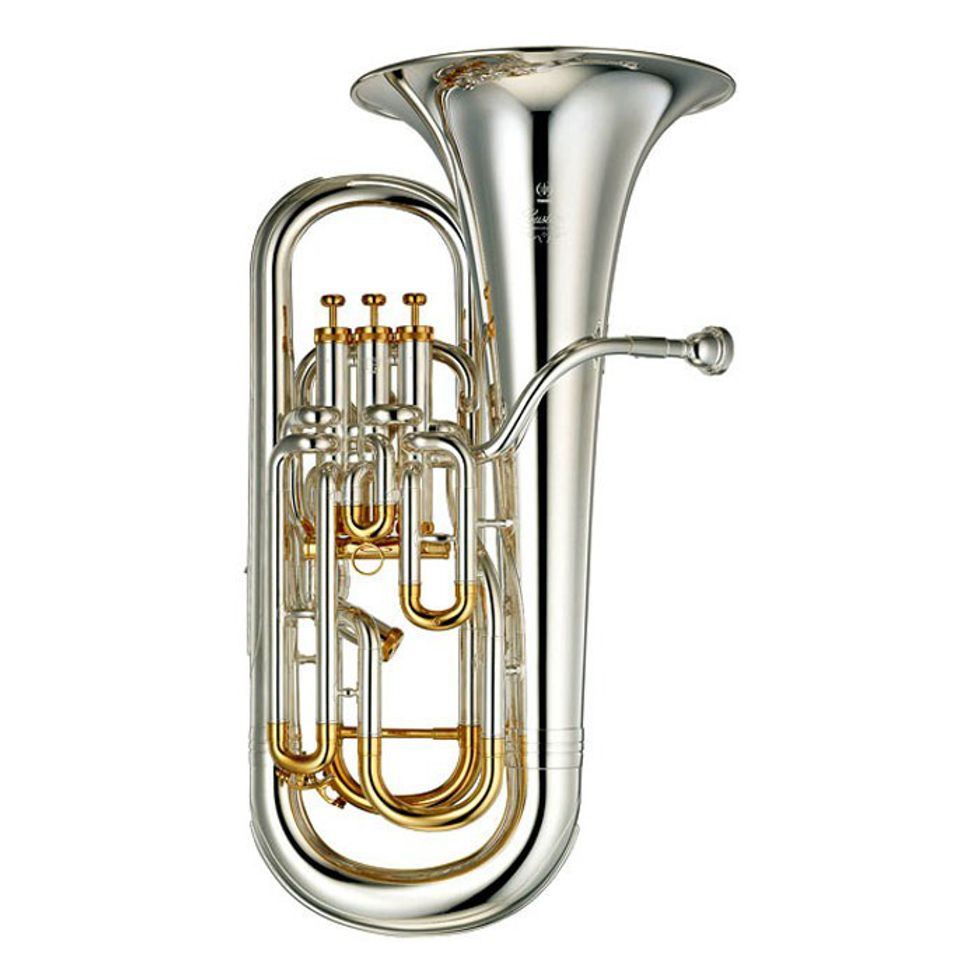Do you know how the pineapple got its name? Christopher Columbus named it upon astonishingly discovering this exotic fruit on his voyage intended for India. It is alluring to think about how confounded Columbus must have been trying to describe this novelty to his companions back in Europe. Clearly, he likened the outer skin of the fruit to a pine cone and the inner texture to that of an apple.
I feel the same way as Columbus did when I describe the instrument I play to someone who hasn't spent seven years of their life in a concert band. When I joined the band in sixth grade, I began my life as a euphoniumist. "What's that," you may ask. My stock answer is, "It's like a miniature tuba." With that, the lightbulb in my interrogator's brain goes off; the connection has been made. But the euphonium is more than just a shrunken version of one of the more commonly known brass instruments.
Whenever I whip out the brazen body, with its shiny gold finish, pearly buttons, vertical tubing, and upright bell, people see the similarity to a tuba. They are appalled, however, when they hear the smooth, mellow tone resonating from the bell. The reaction that they give is as gratifying as is playing the instrument itself. No longer will they associate "euphonium" with "the tuba's little brother."
There is some pride in me that hates being tagged onto the tuba family. I wish that people would recognize the name "euphonium" as quickly as they do "trumpet," or "tuba," or "saxophone." But there is something good in the esoteric nature of this inconspicuous instrument.
One of the nice things about the euphonium is that it is made to play in concert pitch. This makes it really easy for euphonium players (also trombone and tuba players) when playing in a concert band. When the conductor talks about a note, he uses the concert pitch, which, like SI units, is the universal name for the pitch. Contrary to euphoniumists, woodwind players (flutists, clarinetists, saxophonists, etc.) have to convert the concert pitch into whatever pitch their instrument is made to play. This detail saves euphoniumists a lot of trouble.
Most instruments have odd-looking variations, like the contrabass flute:
In my opinion, the euphonium's variation, the double-belled euphonium, is especially fascinating. If you listen to this video, you will hear how this instrument can produce both the mellow and more crass sounds of a euphonium and a trumpet, respectively, in one instrument!
The versatility of the euphonium is what distinguishes it from others. Its range extends above and below that sweet spot, right on the staff. Skilled players can play as low as a tuba or as high as a trumpet. If you want to hear the versatility of the euphonium by a British aficionado, click here.
As you can see in the video, Steven Mead's skills span a variety of sounds. He imitates a trombone, a tuba, a victrola, and even the Force (see 3:46 of the video). Similar to the mockingbird (a shameless plug for the Texas state bird), the euphonium can mimic a variety of other instruments. However, it is not just a "copy cat." The fluid, rounded tone that it produces distinguishes it from other instruments.
After high school, choosing a university without much opportunity to continue my hobby as a euphoniumist, I vowed to find some way not to lose my skill. Since buying my own euphonium, I have tried to keep in practice by joining an ensemble for a semester and by joining a band for our campus's Battle of the Bands. The most fun I have, though, is picking it up and going back to rehearse those pieces which I played in my high school career. The music transports me back to the grand times I had creating music with my peers on my exceptional instrument.







 Photo by
Photo by  Photo by
Photo by  Photo by
Photo by 



















